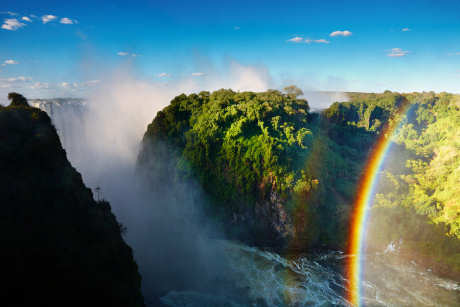After we ate, we got to work planting! We planted tomatoes, cucumbers, many types of herbs and lots and lots of flowers! Everyone worked so hard and did a fantastic job. Thank you so much for all the help in making Shirley Futch Plaza a healthy and pretty place to live!
Wednesday, May 25, 2016
2nd Annual Garden Party
Thursday, May 19, 2016
Thursday, May 5, 2016
Travel Day -> 7 Wonders of the Natural World
- Mount Everest in Nepal.
10 Facts about Mount Everest
Pictures of Mount Everest
- Victoria Falls in Zambia/Zimbabwe.

Victoria Falls is the only waterfall in the world with a length of more than a kilometer and a height of more than hundred meters. It is also considered to be the largest fall in the world.
The noise of Victoria Falls can be heard from a distance of 40 kilometers, while the spray and mist from the falling water is rising to a height of over 400 meters and can be seen from a distance of 50 kilometers. No wonder that the local tribes used to call the waterfall Mosi-o-Tunya “The smoke that thunders”.
- Grand Canyon in Arizona, USA.
The Grand Canyon is 277 miles (446 km) long, up to 18 miles (29 km) wide and attains a depth of over a mile (6,093 feet or 1,857 meters).[2] Nearly two billion years of Earth's geological history have been exposed as the Colorado River and its tributaries cut their channels through layer after layer of rock while the Colorado Plateau wasuplifted.[3] While some aspects about the history of incision of the canyon are debated by geologists,[4] several recent studies support the hypothesis that the Colorado River established its course through the area about 5 or 6 million years ago.[5][6][7] Since that time, the Colorado River has driven the down-cutting of the tributaries and retreat of the cliffs, simultaneously deepening and widening the canyon.
- Great Barrier Reef in Australia.
The Great Barrier Reef, off the coast of Queensland in northeastern Australia, is the largest living thing on Earth, and even visible from outer space. The 2,300km-long ecosystem comprises thousands of reefs and hundreds of islands made of over 600 types of hard and soft coral. It's home to countless species of colourful fish, molluscs and starfish, plus turtles, dolphins and sharks.
- Northern Lights.
- Paricutin volcano in Mexico.
Today the volcano is silent. Visitors
can experience Paricutin by traveling to the nearby town of Angahuan that
survived the eruption. This location is known as the "Balcony of the
Paricutin" and from its location on top of a mountain both the extinct
volcano and its surrounding lava fields can be seen along with the ruins of the
church of San Juan. The bell tower of the church still stands like a lonely
sentinel above the frozen lava part of one of the wonders of the natural world.
The Harbor of Rio de Janeiro is located in Brazil and was created by erosion from the Atlantic Ocean and is also known as Guanabara Bay. The Harbour is surrounded by gorgeous granite monolith mountains that include the famous Sugar Loaf Mountain at 1,296 feet (395 m), Corcovado Peak at 2,310 feet (704 m), and the hills of Tijuca at 3,350 feet (1021 m). Visitors will also experience numerous islands including Governor’s island, Fundao and Snakes Island.
- Located around Rio de Janeiro, Brazil
- Surrounded by unique mountains and formations
- Also known as Guanabara Bay
- Largest bay in the world based on volume of water
- Rio de Janeiro translates “river of January” in Portuguese
Wednesday, May 4, 2016
Subscribe to:
Posts (Atom)






